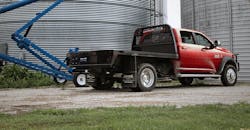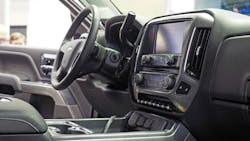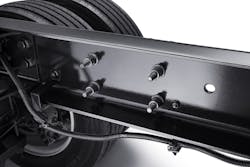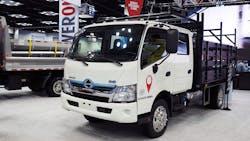Not to be outdone by their more numerous light-duty siblings, medium-duty trucks covering Classes 4-6 have been the object of a flurry of development and experimentation the last few years. They're often on the job with upfit bodies of various kinds serving trades and utilities or handling last-mile and metro/urban-area deliveries and distribution, and they have the benefit of not requiring a commercial driver's license to operate.
That adds to their appeal, since fleets can hire drivers from a much larger potential employee pool. Not only do these trucks have impressive capabilities, their typically shorter-range duty cycles have also made medium-duty trucks good candidates for electric power.
While many electric trucks in these and even the heaviest classes are being developed, tested, and prototyped, medium duty is where you'll now find commercially-ready fully electric trucks for fleet purchase.
A standout example is the Class 4 Mitsubishi Fuso eCanter in the Daimler Trucks stable, which will see full production launch this year. Meanwhile, Fuso also recently expanded engine options in its FE Series cabovers with General Motors' 6.0L gasoline V8.
These middle classes of trucks—often called “work trucks” since they serve many commercial purposes beyond hauling freight—offer the broadest range of power options. It's not only commercial/fleet ready electrics but also more alternative fuel choices. That includes the least common of those options: look to Freightliner Custom Chassis Corp.'s S2G for a factory-installed propane engine (GM's 8.0L V8 prepped for liquefied propane gas).
Cab-type options abound in medium duty as well. Joining Ram Trucks' 4500-5500 Chassis Cabs and Ford's Super Duty F-450/ F-550/ F-650 conventional-cab trucks that offer regular and crew variants to suit passenger needs are all-new offerings from a collaboration between Navistar and Chevrolet.
Navistar's Springfield, OH, plant will produce the International CV Series Class 4-5 and Chevrolet Silverado 4500HD, 5500HD, and 6500HD chassis cabs unveiled over the course of 2018. They'll have different dealer networks, but all are designed to easily accept a variety of upfit bodies and offer regular/ crew cab passenger capacity options.
Supplementing the CV Series with even larger conventional cab trucks is International's MV Series, notably also launched in 2018 and built at the same plant. It's available as day cab, extended cab, and crew cab models with wheelbases from 128 to 254 in. While it looks the part of the larger truck, the MV is designed for greater maneuverability and ease of operation.
For fleets that require greater passenger capacity but prefer to get it done with a tight-turning cabover, there are plenty to choose from. Isuzu offers regular and crew cab variants of its popular NPR, NQR, and NRR cabover trucks, which the OEM also builds for bowtie badges in Chevrolet's Low-Cab Forward 3500, 4500, and 5500 cabovers. Isuzu's biggest Class 6 FTR and the Chevy 6500XD come only in regular/single cab models for now but allow extensive wheelbase configurations—they can sport box bodies up to 30-ft. long.
Fuso's FE cabovers include big-cab options, too, as do Hino's 155 and 195 trucks, and those two manufacturers also have two of the most unique models in the medium-duty classes. Fuso's FG4X4 has a switchable rear-wheel-drive/all-wheel-drive system, the only cabover available with that drivetrain. And how about a cabover with space for up to seven passengers and partially electric motivation?
That's available with Hino's Class 5 195h-DC, which signifies it's a hybrid double cab. It's got an almost oddball combination of an elongated cabover design and 5L turbo diesel engine with piggybacked electric power. Hino's Hybrid Adaptive Control System communicates continuously with the engine's electronic control unit to evaluate driving conditions and adjust the support it lends to the diesel, improving fuel efficiency and lowering emissions.
NEXT: Big trucks acting like smaller ones
PREVIOUS: Versatile light vehicles
* * *
About the Author
Aaron Marsh
Aaron Marsh is a former senior editor of FleetOwner, who wrote for the publication from 2015 to 2019.



